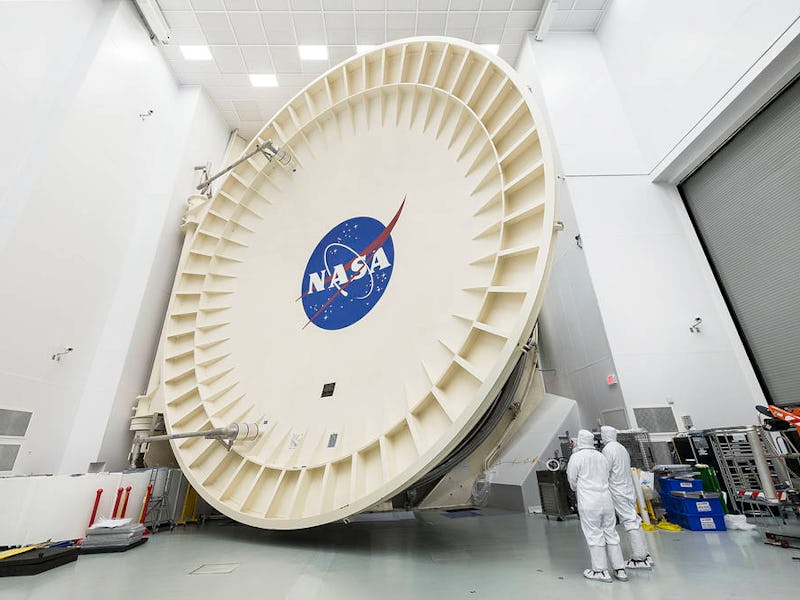NASA Locked Its $8.7 Billion Webb Telescope Behind a Giant Paper Plate
Behind this giant door that looks like a paper plate, it's very cold.

The coldest, most unforgiving place in Houston is “Chamber A” at the Johnson Space Center, and NASA scientists just locked the $8.7 billion James Webb Telescope inside it for 100 days.
The chamber will simulate space-like conditions as a bit of a stress test for the sunflower-shaped Webb telescope, and keeping things shut tightly is a door that’s 40 feet in diameter and weighs 80,000 pounds. If everything performs well in the frigid, airless conditions therein, the Webb Telescope (which is the successor to the Hubble telescope) will stay on schedule for its October 2018 launch into space.
After sealing the gargantuan door, NASA scientists will spend 10 days sucking all the air out of the chamber. Then it will take about a month to lower the temperature of the telescope to space-operating conditions, which is an intensely chilly –388 degrees Fahrenheit.
If you’re cool enough to follow the @nasawebb on Instagram, you might already know what we’re talking about here. The giant door, which, to be fair, looks a little like a paper plate one might use at a barbecue in one of Houston’s parks, was photographed and shared on Instagram this week.
The great vault door of Chamber A.
It might seem odd that the Webb telescope will constantly sit in -388 degree climes, because satellites often get seared by the sun, bringing temperatures to above 200 degrees. But the James Webb Telescope — which will orbit the sun, not Earth — is fitted with a huge “sunshield,” the size of tennis court.
As the telescope orbits the sun, it will face away from our searing star and stare out into space, as will the telescope’s cameras, and in the without sunlight, temperatures are below -380 degrees.
An artist's conception of the James Webb Telescope, staring out into deep, primordial space.
The telescope will orbit the sun nearly one million miles from Earth, and massive mirrors, located on its outer space-facing side, will allow the telescope to peer into the far reaches of space. The cameras are designed to observe some of the earliest formed galaxies, stars, and nebulas in the universe, because they will capture infrared light.
Due to the universe’s incessant expansion, these ancient galaxies have traveled so far away, and at such a speed, that the shape of their light has been warped and spread out. This stretched light is no longer visible in the narrow wavelengths we can see, but the James Webb telescope’s infrared cameras will be able to observe this ancient space light, and where it came from.